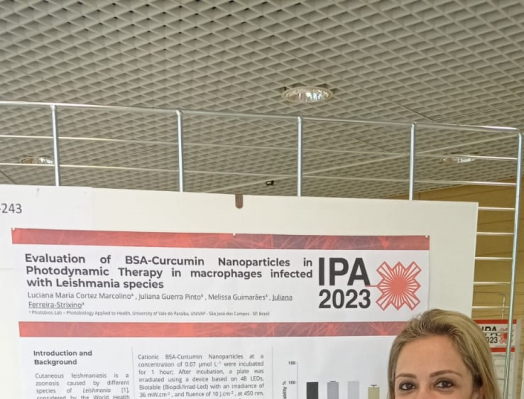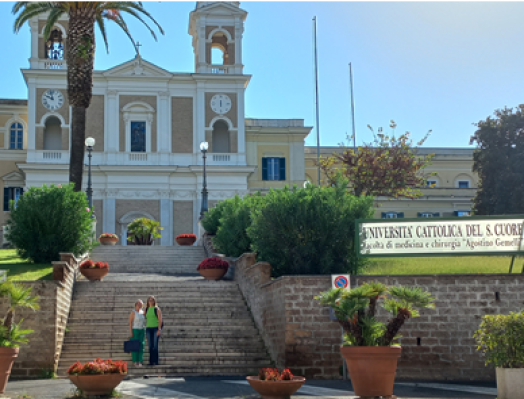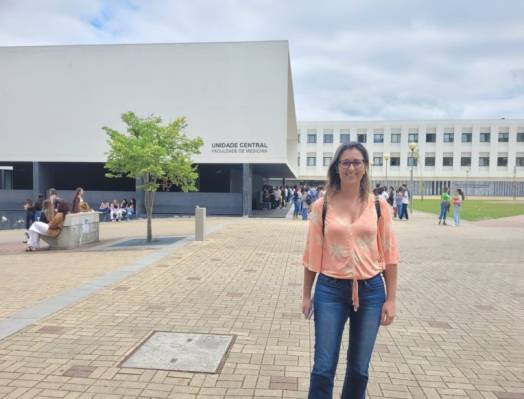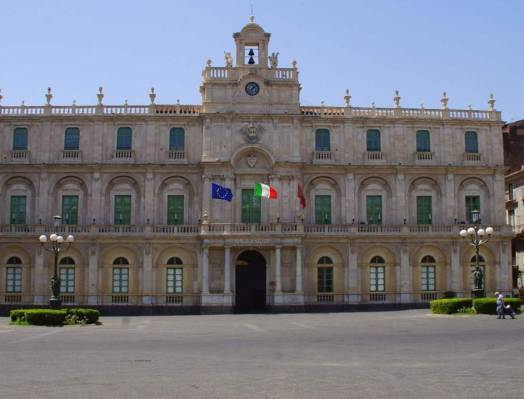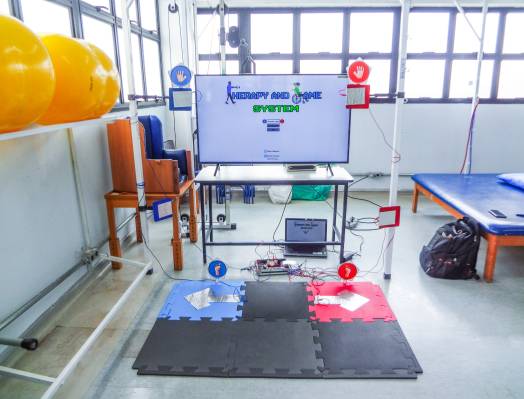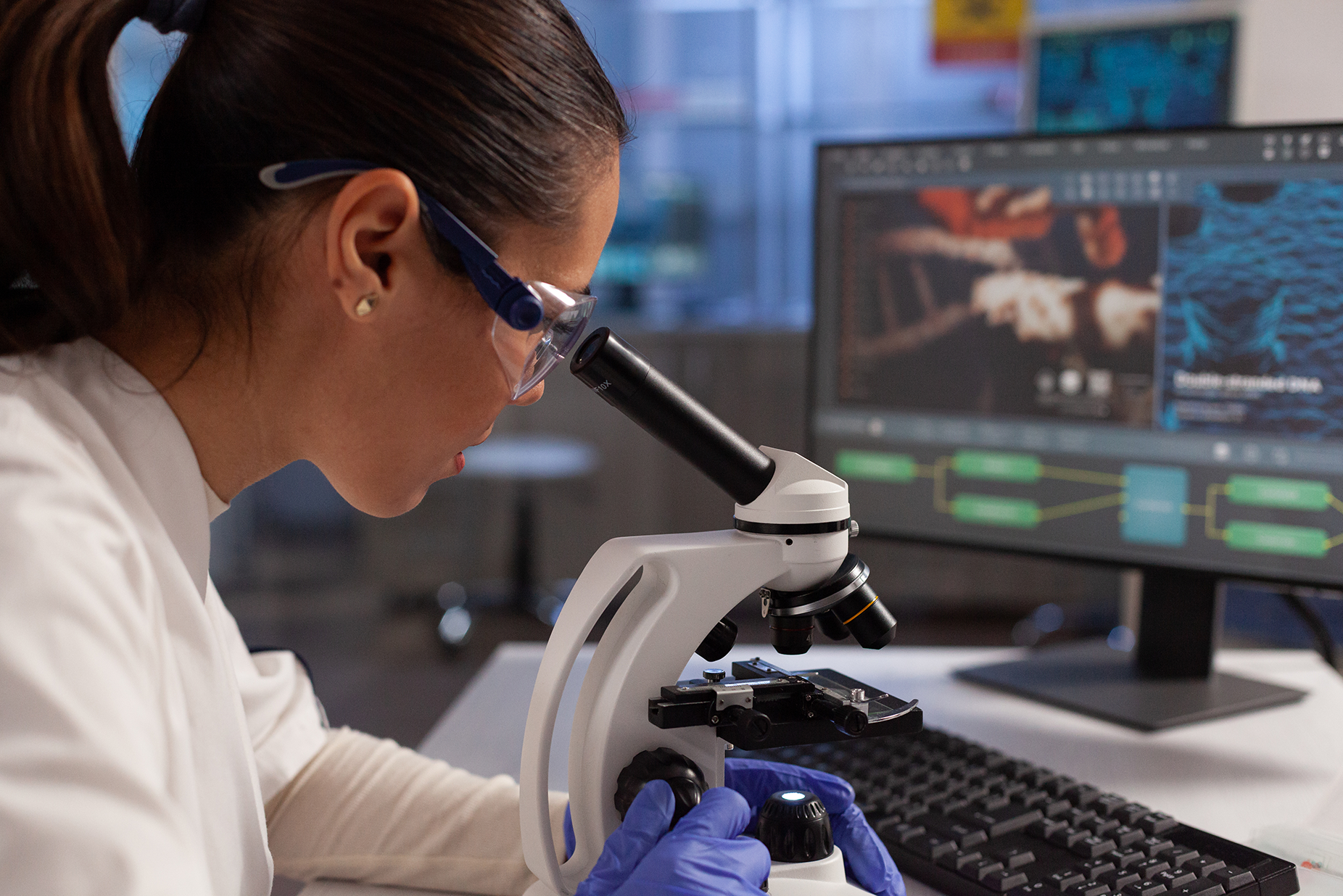


Since its creation, the Master’s and PhD Program in Biomedical Engineering (PPGEB) has been training Masters and Doctors in the areas of concentration of Materials Applied to Biomedical Engineering and Biophotonics. Our mission is to produce and disseminate knowledge in Biomedical Engineering, with a focus on scientific and technological innovation, in order to improve the efficiency of professionals in society and meet the growing demands for qualification in the job market.
PPGEB offers a solid theoretical and experimental education through courses that integrate engineering and health, such as: Nanosensors for disease diagnosis and treatment, Pre-clinical and clinical research in Biomedical Engineering, Biological signal processing, Photodynamic therapy, among others.
Currently, the program includes 16 permanent PhD researchers who maintain strong scientific collaborations with leading national and international centers in biomedical engineering, encouraging and supporting students to pursue new challenges.
Objective
The objective of the PPGEB is to train professionals who work or intend to work in universities, research institutes, clinics, and technology- and innovation-based companies in the healthcare sector. The goal is to apply the knowledge acquired toward the development of new non-invasive diagnostic techniques, the use of novel treatment methods, and expertise in the development and preparation of new biomaterials. PPGEB stands out for its commitment to scientific innovation, the training of highly qualified professionals, and the integration of research, education, and community outreach for the benefit of society.
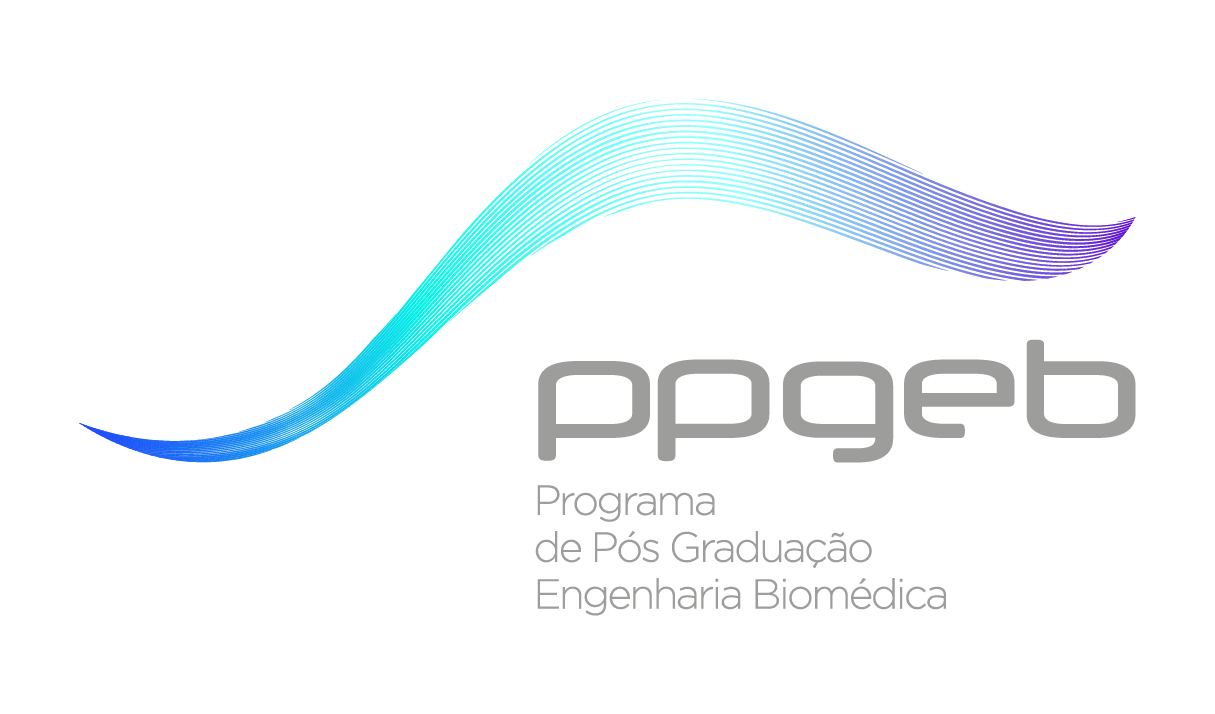
Master’s Degree
To obtain the title of Master, the student must complete a minimum of 30 credit units, of which at least 21 must be earned through coursework and 9 units will correspond to the final dissertation.
Courses | Credits
Mandatory Courses | 16
Elective Courses | 5
Dissertation Preparation and Defense | 9
PhD and Direct PhD
To obtain the title of Doctor, the student must complete a minimum of 60 credit units, of which at least 30 must be earned through coursework and 30 units will correspond to the final thesis.
Courses | Credits
Mandatory Courses | 16
Elective Courses | 14*
Thesis Preparation and Defense | 30
* Students holding a Master's degree may request 9 credits corresponding to the previously defended dissertation.
Area of Concentration I
Materials Applied to Biomedical Engineering
Research Lines:
Biomaterials and Biocompatible Materials
Researchers:
Professor Cristina Pacheco Soares, Ph.D.
Professor Emilia Angela Lo Schiavo Arisawa, Ph.D.
Professor Ivone Regina de Oliveira, Ph.D.
Professor Lúcia Vieira, Ph.D.
Professor Luciana Barros Sant Anna, Ph.D.
Professor Luis Eduardo Silva Soares, Ph.D.
Professor Maricília Silva Costa, Ph.D.
Development of Diagnostic Methods and Devices
Researchers:
Professor Emilia Angela Lo Schiavo Arisawa, Ph.D.
Professor Fernanda Pupio Silva Lima, Ph.D.
Professor Mário Oliveira Lima, Ph.D.
Professor Virginia Klausner de Oliveira, Ph.D.
Nanotechnology
Researchers:
Professor Andreza Ribeiro Simioni, Ph.D.
Professor Emilia Angela Lo Schiavo Arisawa, Ph.D.
Professor Leandro José Raniero, Ph.D.
Professor Lúcia Vieira, Ph.D.
Professor Maiara Lima Castilho, Ph.D.
Professor Maricília Silva Costa, Ph.D.
Systems and Processes in Biomedical Engineering
Researchers:
Professor Fernanda Pupio Silva Lima, Ph.D.
Professor Juliana Ferreira Strixino, Ph.D.
Professor Maiara Lima Castilho, Ph.D.
Professor Mário Oliveira Lima, Ph.D.
Professor Virginia Klausner de Oliveira, Ph.D.
Area of Concentration II
Biophotonics
Research Lines:
Optical and Molecular Characterization and Diagnostics
Researchers:
Professor Emilia Angela Lo Schiavo Arisawa, Ph.D.
Professor Juliana Ferreira Strixino, Ph.D.
Professor Kumiko Koibuchi Sakane, Ph.D.
Professor Luis Eduardo Silva Soares, Ph.D.
Professor Maiara Lima Castilho, Ph.D.
Professor Renata de Azevedo Canevari, Ph.D.
Photobiomodulation
Researchers:
Professor Emilia Angela Lo Schiavo Arisawa, Ph.D.
Professor Juliana Ferreira Strixino, Ph.D.
Professor Luciana Barros Sant Anna, Ph.D.
Professor Luis Eduardo Silva Soares, Ph.D.
Professor Maricília Silva Costa, Ph.D.
Photodynamic Therapy
Researchers:
Professor Cristina Pacheco Soares, Ph.D.
Professor Juliana Ferreira Strixino, Ph.D.
Professor Maricília Silva Costa, Ph.D.
Electric Plasmas Applied to Biomedical Engineering
Researchers:
Professor Emilia Angela Lo Schiavo Arisawa, Ph.D.
Professor Lúcia Vieira, Ph.D.
Professor Maiara Lima Castilho, Ph.D.
Professor Maiara Lima Castilho, Ph.D.
Coordinator of PPGEB
Lattes | ORCID
Professor Andreza Ribeiro Simioni, Ph.D.
Vice coordinator of PPGEB
Lattes | ORCID
PERMANENT FACULTY MEMBERS OF PPGEB
Professor Cristina Pacheco Soares, Ph.D.
Lattes | ORCID
Professor Emilia Angela Lo Schiavo Arisawa, Ph.D.
Lattes | ORCID
Professor Fernanda Pupio Silva Lima, Ph.D.
Lattes | ORCID
Professor Ivone Regina de Oliveira, Ph.D.
Bolsista de Produtividade em Pesquisa do CNPq - Nível 2
Lattes | ORCID
Professor Juliana Ferreira Strixino, Ph.D.
CNPq Research Productivity Fellow – Level 2
Lattes | ORCID
Professor Leandro José Raniero, Ph.D.
Bolsista de Produtividade em Pesquisa do CNPq - Nível 1D
Lattes | ORCID
Professor Lúcia Vieira, Ph.D.
Bolsista de Produtividade em Pesquisa do CNPq - Nível 2
Lattes | ORCID
Professor Luciana Barros Sant Anna, Ph.D.
Lattes | ORCID
Professor Luis Eduardo Silva Soares, Ph.D.
Lattes | ORCID
Professor Maricília Silva Costa, Ph.D.
Lattes | ORCID
Professor Mário Oliveira Lima, Ph.D.
Lattes | ORCID
Professor Renata de Azevedo Canevari, PhD.
Lattes | ORCID
Professor Virginia Klausner de Oliveira, Ph.D.
Bolsista de Produtividade em Pesquisa do CNPq - Nível 2
Lattes | ORCID
VISITING PROFESSOR
Professor Alejandro Guillermo Miñán, Ph.D.
Professor adjunto
Facultad de Ciencias Exactas, Universidad Nacional de La Plata e pesquisador adjunto do Instituto de Investigaciones Fisicoquimicas Teoricas Y Aplicadas - Argentina
Lattes | ORCID
REQUIRED COURSES | CREDITS
Introduction to Biomedical Engineering | 4
Fundamental concepts, principles, applications, and fields of activity in the various areas of Biomedical Engineering, through seminars on the research developed in the program and presentation of the IPD infrastructure and laboratories. Introduction to Biomedical Engineering / Roles of Biomedical Engineers. Human Genome and Molecular Diagnosis. Biomaterials and their Applications. Cell and Tissue Engineering. Nanotechnology. Photodynamic Therapy. Photobiomodulation. Spectroscopies and Optical Diagnostics. Muscle Activity and Signal Processing. Clinical Thermography.
Scientific Methodology | 4
Scientific research and method. Characteristics and skills of a researcher. Researching bibliographic references on the Internet. Basic elements of a research project. Research ethics. Submitting a scientific project to the Ethics Committee. Types of research and stages: from project to experiment and result analysis. Key elements of a master’s thesis. Key elements of a doctoral thesis. Aspects of scientific work. Basics of oral presentation. Methodological fundamentals and guidelines for writing a scientific article.
Biostatistics | 4
Basic biostatistics concepts: variables, data gathering, population and sample, sampling techniques. • Statistical data presentation: table components, contingency tables, frequency distribution tables, bar charts, pie charts, and histograms. • Measures of central tendency: mean, median, mode, quartiles. • Measures of variability: range, variance, standard deviation, coefficient of variation. • Basics of correlation and regression: scatter plots, positive and negative correlation, correlation coefficient, line chart, regression line, explanatory variable choice, variable transformation. • Probability concepts: fundamental principles, conditional probability. • Probability distributions: binomial, Poisson, normal distribution. • Confidence intervals: standard error of the mean, confidence interval. • Chi-square test and Student's t-test. • Analysis of variance: one-way and two-way ANOVA.
Morphofunctional Sciences | 4*
Basic notions of biochemistry, cells, tissues, anatomy, and physiology of the human body. Explanation of general concepts of the human body's constitution. Differentiation of human systems. Identification of mechanisms explaining organic functions.
Biological Mathematics | 4**
Physical quantities. Scientific notation. Unit conversions. Measurement error theory. Mathematical functions: linear, polynomial, exponential, logarithmic, sinusoidal.
Differential and Integral Calculus applied to Biological Systems: limit, continuity, minima and maxima, variation rate and speed of physiological processes, derivatives, integrals.
Modeling Biological Systems: Ordinary Differential Equations. Bacterial growth. Radioactive decay. Heating and cooling rate of body extremities. Epidemiological systems.
TOTAL CREDITS: 16
* For students from Exact Sciences
** For students from Health and Biological Sciences
ELECTIVE COURSES
Scientific Activities | 2
This course aims to train graduate students in preparing Extended Abstracts and Scientific Articles that reflect the knowledge and skills acquired during the graduate program, particularly related to scientific writing and dissemination of research results developed within the program. Participation in the organization of scientific events is also considered.
Applied Biophotonics | 2
Basic concepts of light physics, light-tissue interaction; differences between laser and LED, dosimetry calculations, laser applications in diagnostics, microscopy, and cytometry, and light applications in treatments (photodynamic therapy and photobiomodulation).
Drug Delivery Systems and Controlled Release | 3
Provides students with the concept of a controlled drug delivery system; presents the various systems, their characterization, and main applications. Prepares students to choose the appropriate system for their research aimed at product and/or process development. - Basic concepts and classification of controlled drug delivery systems. - Advantages over traditional systems. - Development and characterization of liposomes, nanoparticles, and nanoemulsions.
Tissue Engineering | 3
Introduction to Animal Cell Culture Technology. Cloning and Expression of Heterologous Proteins in Animal Cells. Growth Models and Product Formation. Bioreactors for Animal Cells. 3D Cell Culture. Quality Control of Biotechnological Products. Stem Cells and Applications. Tissue Engineering in bone and nervous systems. Biomaterials in Tissue Engineering. Cytotoxicity and genotoxicity tests.
Generation of Electric Plasmas and Their Applications in Biological Areas | 2
Concept of electric plasmas: natural and lab-generated; Plasma generation through electrical discharges: general structure and configurations; Ionization fundamentals; constituent particles in low ionized plasma (cold plasma); kinetics and interactions in plasma; transport phenomena; plasma-based processes: deposition, etching, treatment; Experimental plasma setups: normal discharge, dielectric barrier discharge, corona discharge, sliding arc, micro-discharges; Plasma reactors: low and atmospheric pressure; Plasmas in liquids; Plasma for biomaterials synthesis and biomedical sterilization; Plasma applications in medicine: interaction mechanisms with biological surfaces; Laboratory sessions on DC discharge operation, Paschen curve, and dielectric barrier discharge on biological surfaces.
Histotechnology Applied to Biomedical Engineering | 2
Histology study methods and applications. Light and electron microscopy. Morphological and functional characteristics of basic tissues: epithelial, connective (proper, adipose, cartilage, bone), muscular, and nervous tissue. Sample collection methods (biopsies, necropsies), fixation, sectioning, and dehydration. Histological processing: dehydration, clearing, embedding. Microtomy for histological sectioning. Interpretation of biological tissue sections. General and special stains, including immunohistochemistry for evaluating specific proteins. Qualitative and quantitative imaging analysis.
Introduction to Laser and Photobiomodulation | 2
Basic laser and photobiomodulation concepts. Students will learn: - Basic principles of lasers; - Laser-tissue interaction; - Application modalities and systemic laser therapy concepts; - Scientific literature evaluation. Topics include: laser history, properties, and operation; interaction mechanisms with biological tissues; photodynamic therapy (PDT); systemic photobiomodulation (ILIB); scientific literature analysis.
Nanotechnology Applied to Biomedical Engineering | 2
Evolution of nanoscience and emergence of nanotechnology. 2. Physics applied to nanotechnology: Scale effects and Surface Plasmon Resonance. 3. Correlations between properties and applications of nanomaterials. 4. Nanotechnology in Biomedical Engineering: Nanodiagnostics, Smart Nanodrugs, Nanotoxicology. 5. Considerations and limitations of nanomaterial use.
Pre-clinical and Clinical Research in Biomedical Engineering | 2
Pre-clinical: Animal use in research, ethics, welfare, 3Rs principle, legislation, experimental models, biosafety, surgical procedures, histological methods, sample processing, staining techniques, analysis of histological sections. Clinical: Quantitative motor function evaluation methods (force platform, isokinetic dynamometer, EMG, balance analysis); therapeutic resources (bodyweight support, virtual therapy, vibration, laser); clinical studies and scientific advancements in sensorimotor rehabilitation, brain and musculoskeletal plasticity.
Extension Practices | 2
Extension. Interdisciplinary actions among graduate programs. Professional knowledge and academic life. Scientific and cultural formation in astrophysics. Community urban planning. Policy proposals. Public health. Biosafety. Solid waste treatment.
Signal Processing | 3
Classification of Signals and Discrete Systems. Analog-Digital Systems: Time Discrete Signal Processing using MATLAB. Representation of Linear Time-Invariant Systems (LTI) using MATLAB. Integral Transforms. Z Transform and its Applications in System Analysis. Fourier Series: harmonics in signal processing. Discrete Fourier Transform (DFT), FFT, and Filters: Applications.
Biomedical Engineering Seminars | 2
Presentation and discussion of scientific knowledge involving the research lines in biomedical engineering, their innovations, and scientific and technological application prospects, delivered in seminar format.
Material Characterization Techniques I | 3
Surface and Interface Characterization Introduction - Definitions and Concepts - Surface Properties - Sample Preparation and Cleaning - Technical standards - Real Density - Pore Size Distribution - Surface Area - Imaging Methods (Optical Microscopy, SEM, TEM, AFM, STM) - Spectroscopy Methods (EDX, UV-VIS, FTIR, XPS) - Other techniques (XRD, Raman, Impedance, Resistivity, TGA, DSC) - Surface Analysis Applications (Metallic, Ceramic, Polymer, Composite Materials) - Application in Biomaterials - Practical classes using optical and spectroscopic surface analysis techniques - Technical report writing.
Techniques and Technology for Microbiological Evaluation and Control | 2
Basic bacteriology concepts, antibiotic susceptibility methods; biofilm structure and composition; scanning and transmission electron microscopy; fluorescence confocal microscopy; flow cytometry.
Photodynamic Therapy | 2
Introduction to Photodynamic Therapy (PDT) - Basic mechanisms: photosensitizers, photochemical reactions - Pharmacokinetics and biodistribution of photosensitizers - Photosensitizer-cell interaction - PDT-induced cell death.
• Multiuser Laboratory Center – CLM
• Laboratory of Biostimulation and Tissue Repair
• Laboratory of Cell and Tissue Biology – Dynamics of Cellular Compartments
• Laboratory of Biochemistry Applied to Biomedical Engineering
• Laboratory of Bionanotechnology
• Laboratory for the Development of Advanced Materials
• Laboratory of Sensorimotor Rehabilitation Engineering
• Photobiology Applied to Health (PhotoBioS)
• Molecular Genetics Laboratory (Genelab)
• Laboratory of Histology and Regenerative Therapy
• Laboratory of Imaging and Signals
• Laboratory of Nanosensors
• Laboratory of Nanotechnology and Plasma Processes
• Laboratory of Dentistry and Applied Materials (Loma)
• Laboratory of Micro- and Nanoparticulate Systems
AV. SHISHIMA HIFUMI, 2911 - URBANOVA - SÃO JOSÉ DOS CAMPOS - SP - FONE:(12) 3947-1000
Boleto
Reportar erro!
Comunique-nos sobre qualquer erro de digitação, língua portuguesa, ou de uma informação equivocada que você possa ter encontrado nesta página:
Por Redação, em Master's and Doctorate
